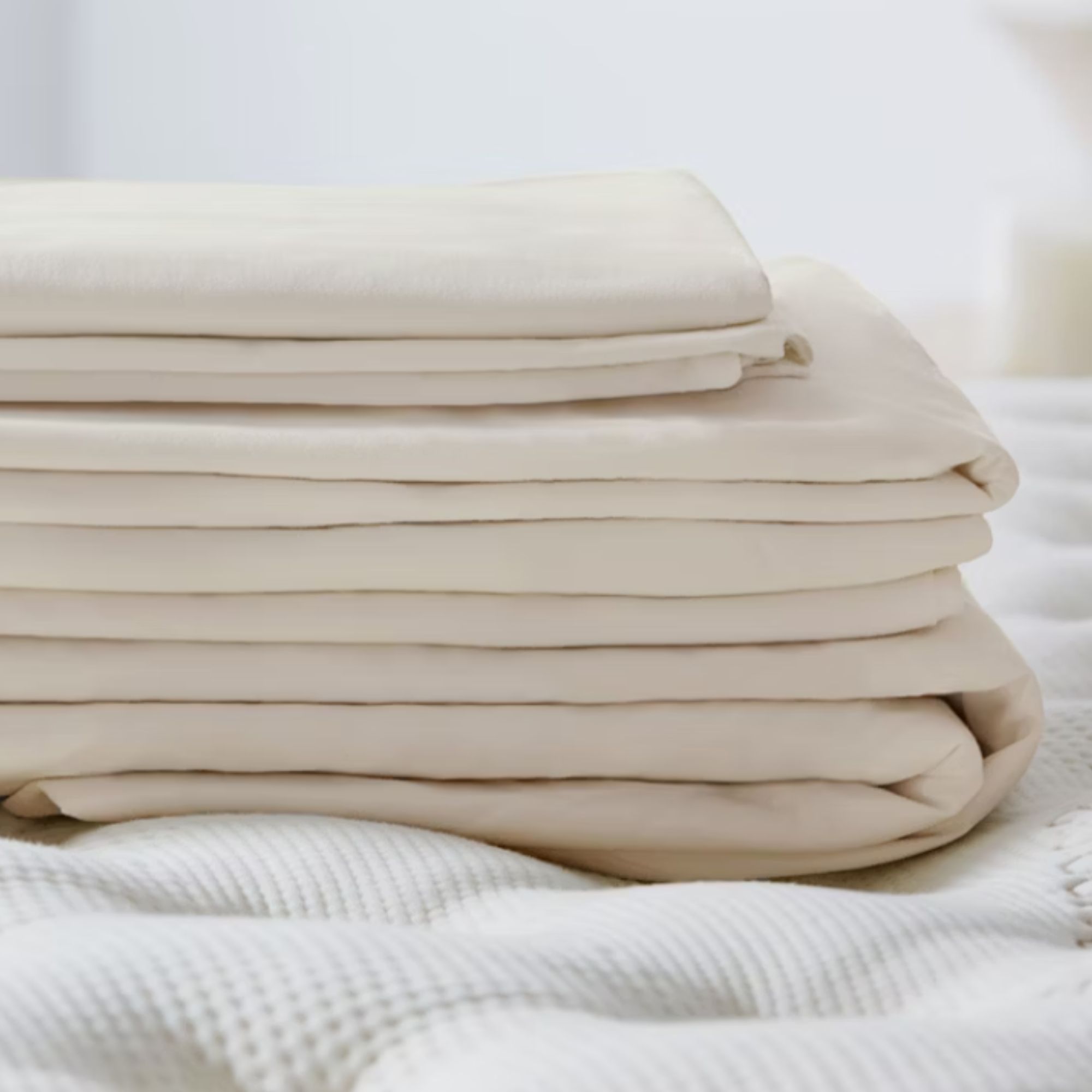What is percale? The crisp, cool cotton that's ideal for hot sleepers
I'd expect to see crisp cotton percale sheets in high-end hotels and luxury spas − here's how to bring that five-star feeling back home


If you've ever tried shopping for bed sheets, you might recognize the term 'cotton percale'. Perhaps you've spotted the words on a care tag or scrolled past them online. You might even own cotton percale bedding and still not understand exactly what you're sleeping on.
Here's what you need to know. Where cotton is a type of fiber, percale is a kind of weave. Cotton percale is what happens when cotton fibers are simply woven in a criss-cross pattern. This makes cool, crisp sheets, which is why hot sleepers often choose cotton percale over other bed sheet types.
As H&G's resident Sleep Editor, I lead a team of expert testers in the search to find the world's best bed sheets. I've tried silky sateen, breathable bamboo, and luxe linen, but I think cotton percale sheets are best for hot sleepers who like a neat bedspread.
What is percale? Your expert guide
This article should tell you everything you need to know about percale, from how it feels to what it costs. If you like what you see, and you want to invest in a set of cotton percale sheets, then you're in luck: I've rounded up a few of my favorites from some of the best places to buy bedding. These sets should suit all sorts of sleepers and complement any color palette.
What is percale?
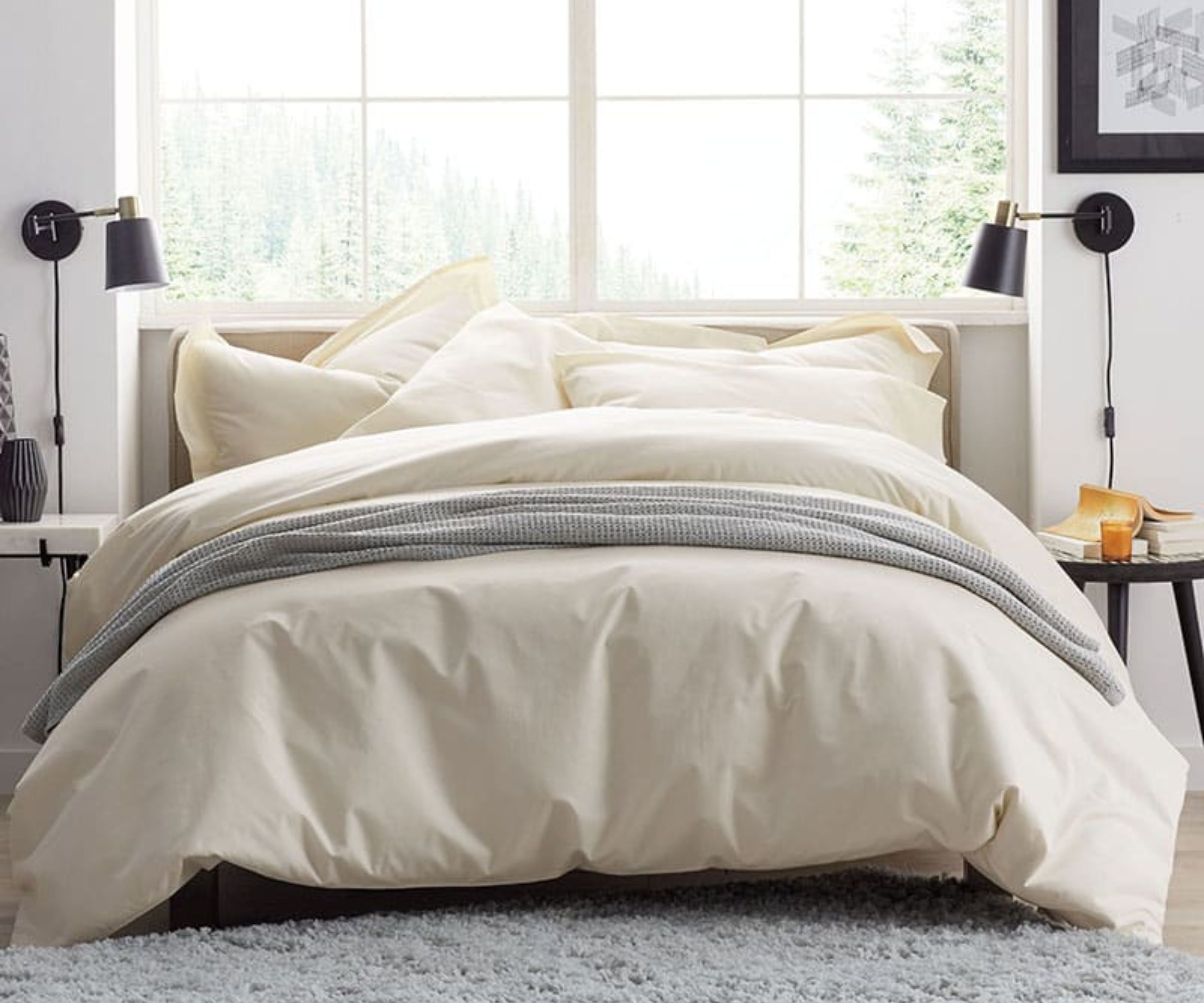
Where cotton sateen feels smooth and silky, cotton percale is crisp and cool. Percale is a loose weave (one-thread-over, one-thread-under) that forms a criss-cross pattern. The points where the threads overlap are known as interlacings or gaps in the weave, creating tiny air pockets to boost breathability and wick moisture.
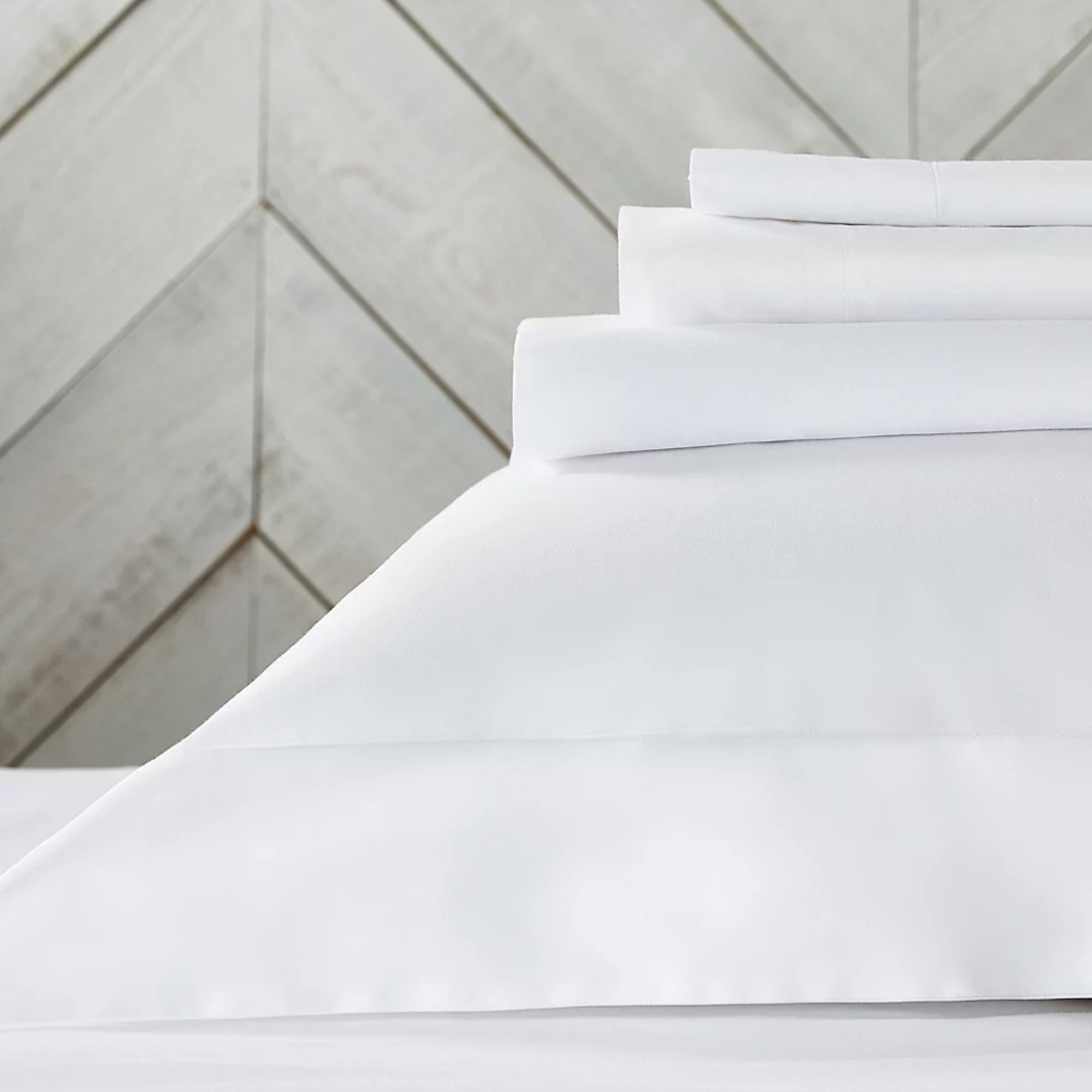
One of our expert testers, Laura Honey, used to work at The White Company. She liked their Egyptian cotton percale sheets so much that she bought two more sets, one for her parents and the other for her grandparents, so that everybody could sleep cool.
What are the pros of sleeping under percale?
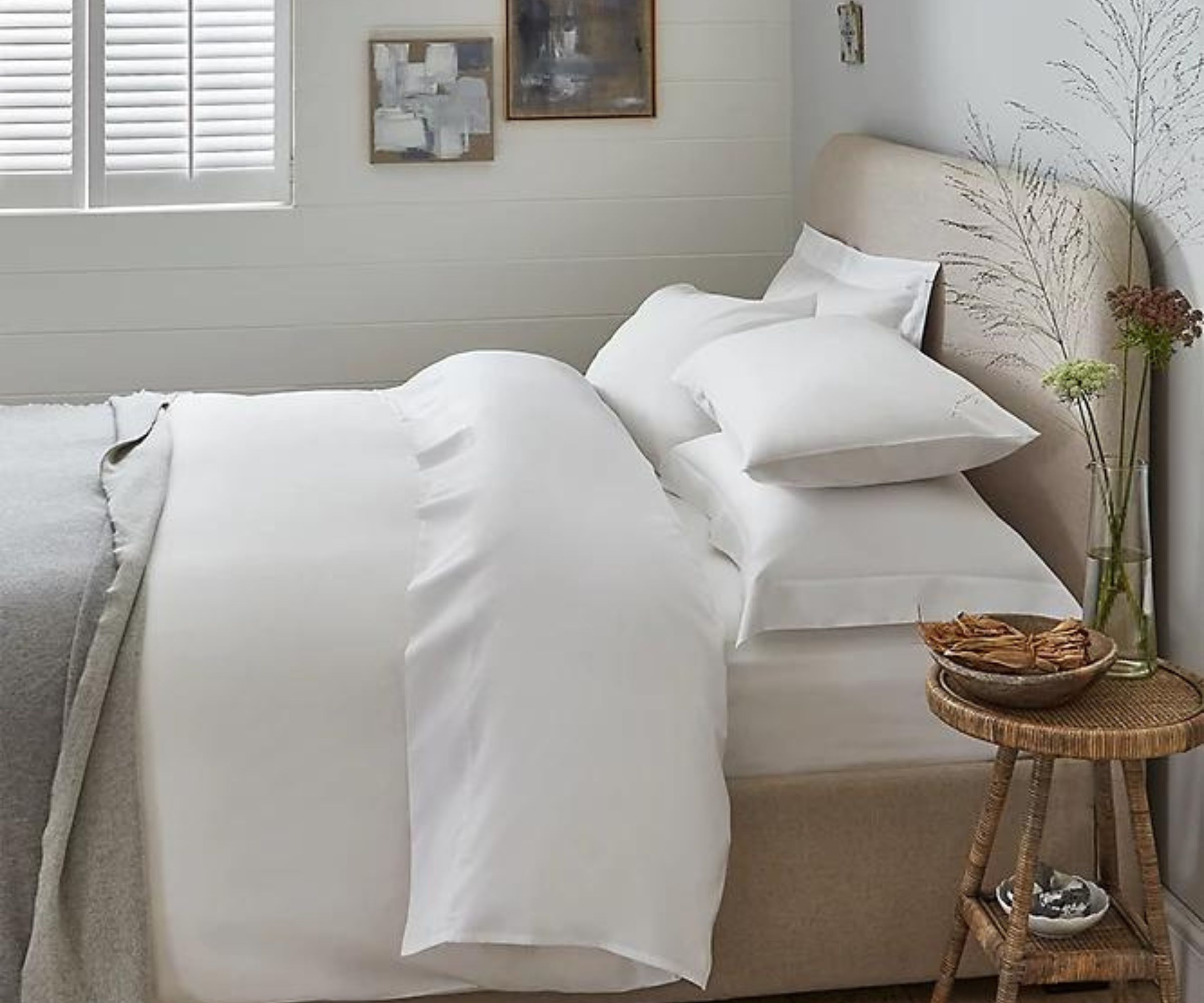
Cotton percale makes an excellent moisture-wicker for hot sleepers. In fact, many of the best cooling sheets feature a percale weave for natural thermoregulation. If you suffer from night sweats or hot flashes, or you live in a warmer climate, I think you'll feel the benefit of cotton percale bedding.
Cotton percale bedding is breathable, but it's durable, too. The fibers are tightly knit and should stand the test of time without breaking or pilling. If you've ever wondered, 'which bedding do luxury hotels use?', the answer is often cotton percale. The simple weave is strong enough to withstand the wear and tear of regular washes without pilling.
Design expertise in your inbox – from inspiring decorating ideas and beautiful celebrity homes to practical gardening advice and shopping round-ups.
What are the cons of sleeping under percale?
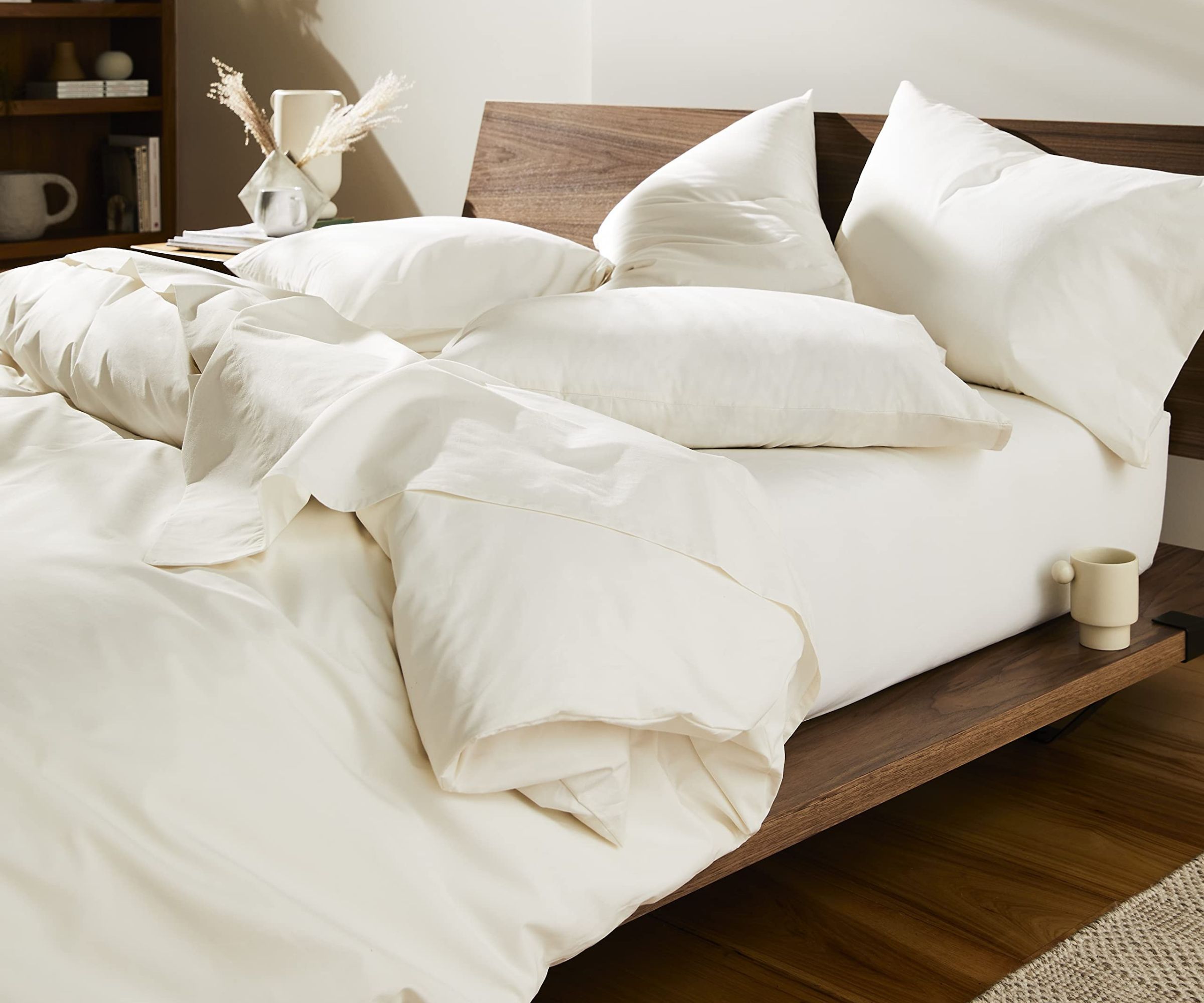
While percale sheets are easy to wash, they're much harder to dry. That's because these sheets are made from natural fibers and simply woven, which makes them more prone to wrinkling than smoother synthetic sheets. It's worth learning how to wash bed sheets to keep them looking crisp.
There are a few steps you can take to counteract creases before they set in. You should wash your cotton percale bedding separately, with plenty of room in the machine, and remove it as soon as the washing cycle ends. Instead of throwing your sheets in the dryer, you should hang them on the line out to air dry, and let gravity do the work for you.
To maintain the crisp finish of cotton percale, you might need to iron your sheets. Since I already iron as part of my laundry routine, this isn't a dealbreaker for me, but it is time-consuming. It's often easier and quicker to iron sheets while they're still a little damp, so it might be worth stopping the washing cycle a minute or two early.
This might all sound like too much work to you. If you like the look of cotton sheets, but you're shopping for something a little easier to clean, you should consider cotton sateen. Featuring a three-threads-over, one-thread-under weave, sateen sheets feel more like satin. Since they sleep a little warmer, they might be more suitable for cool sleepers and colder climates.
FAQS
Is cotton percale better than cotton sateen?
We've written an entire feature on the pros and cons of percale vs sateen bed sheets. If you don't have time to read the whole thing, here are the headlines.
Whether you should sleep under percale or sateen sheets is partly a question of personal preference, but more of a matter of sleep style. Cotton percale is more breathable than sateen, so it sleeps cooler, which makes it more suitable for hot sleepers and warmer climates.
Cotton sateen feels smoother and softer than percale, which can feel a little stiff and starchy. I'd recommend cotton sateen sheets to sleepers with sensitive skin. Sateen is also easier to wash and dry than percale, which might prove a little high-maintenance.
Do cotton percale sheets get softer?
Yes. At first, cotton percale sheets might feel stiff and scratchy against your skin, especially if you're used to softer, synthetic sheets. The good news is that cotton percale should get softer after each wash, though it might take a few cycles to break them in.
Now that you've chosen a material, it's time to consider colors, sizes, thread counts, and so on. It's worth learning how to choose the best bed sheets like a bedding designer to get the most for your money.

Emilia is our resident sleep writer. She spends her days tracking down the lowest prices on the best mattresses and bedding and spends her nights testing them out from the comfort of her own home. Emilia leads a team of testers across America to find the best mattress for every sleep style, body type, and budget.
Emilia's quest to learn how to sleep better takes her all around the world, from the 3Z mattress factory in Glendale, Arizona to the Hästens headquarters in Köping, Sweden. She's interviewed luxury bedding designers at Shleep and Pure Parima, as well as the Design Manager at IKEA. Before she joined Homes & Gardens, Emilia studied English at the University of Oxford.
